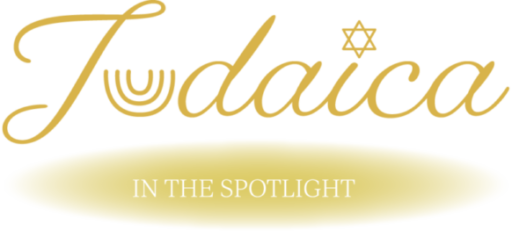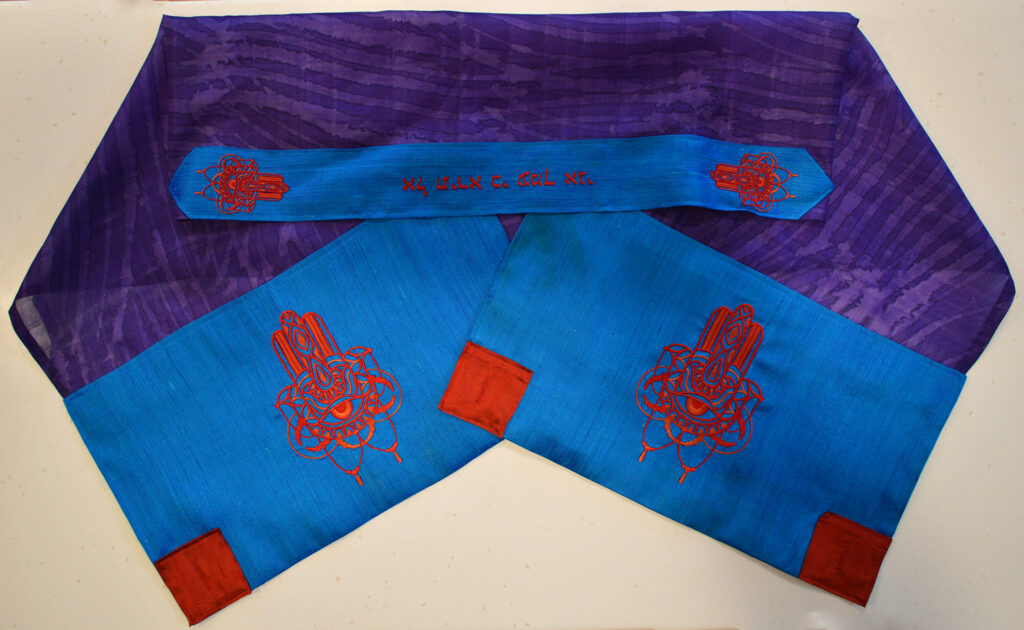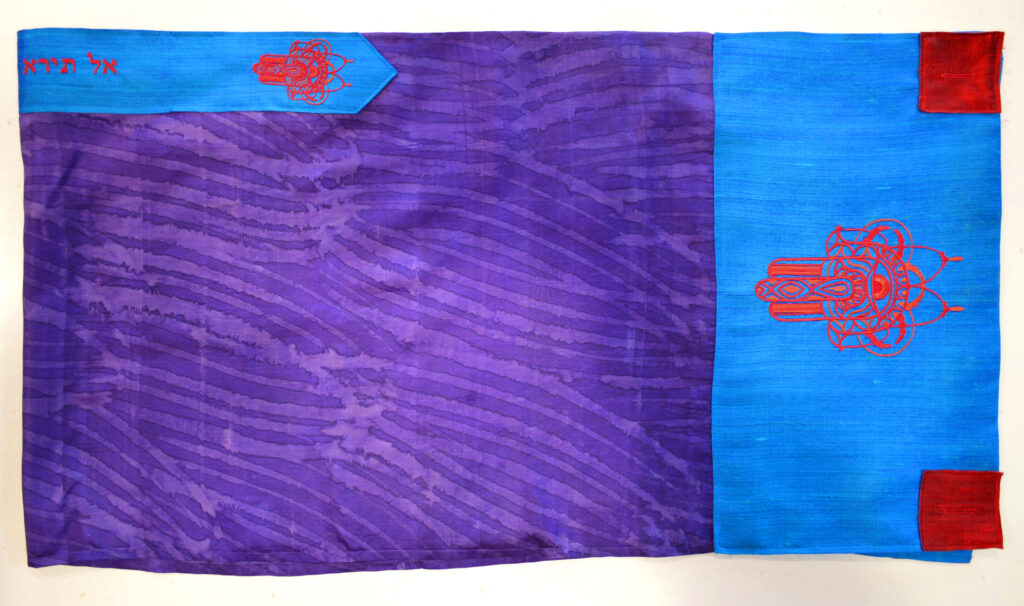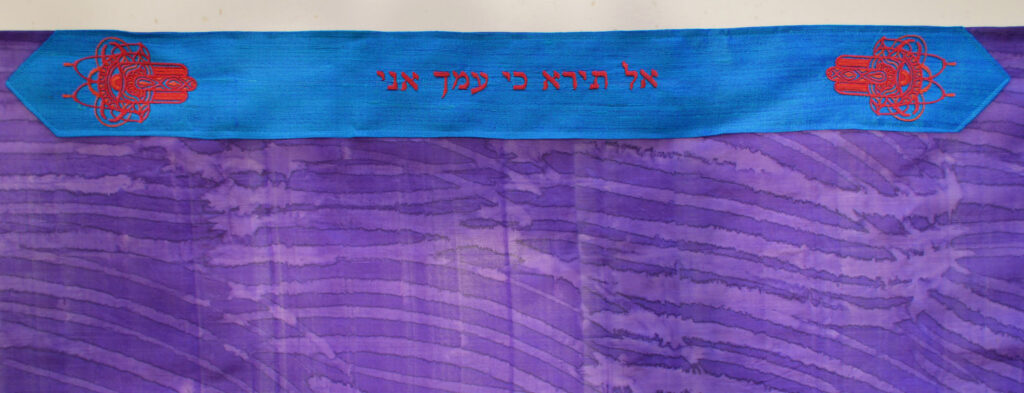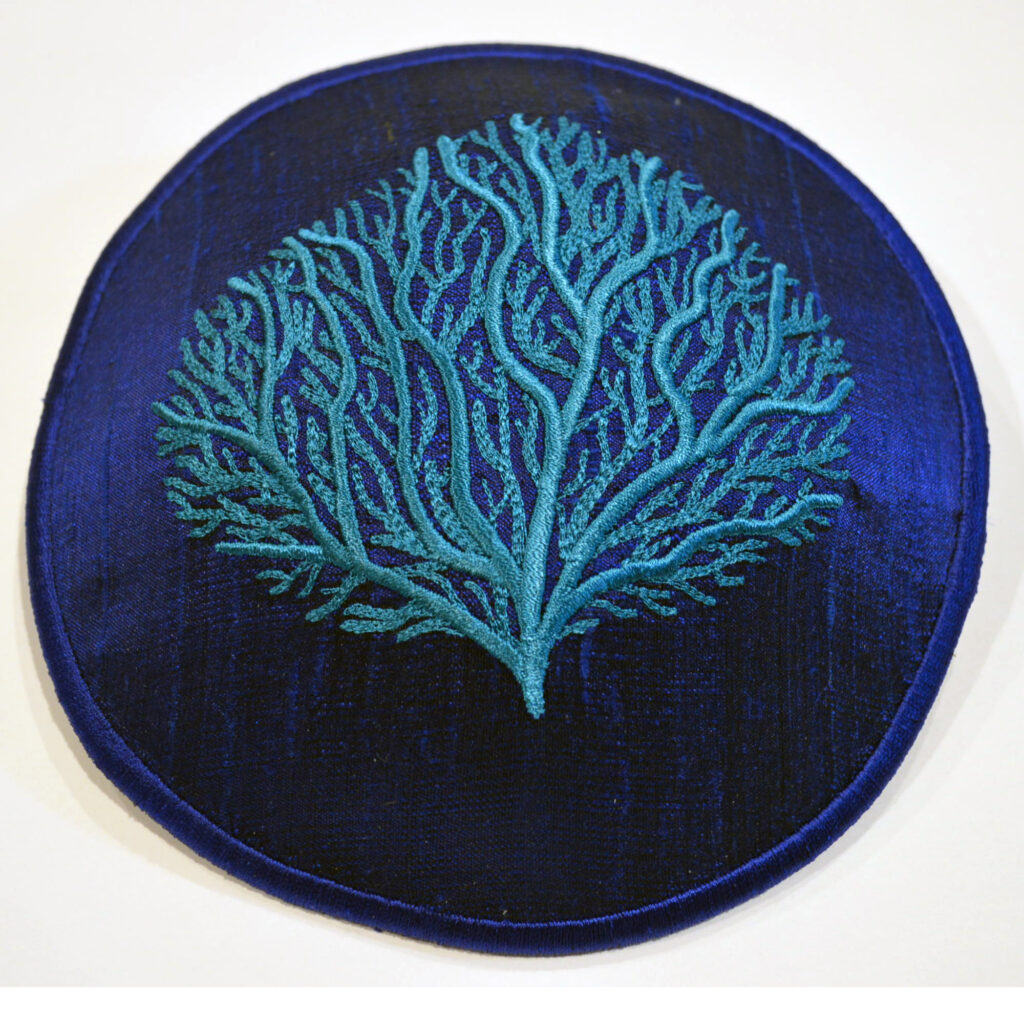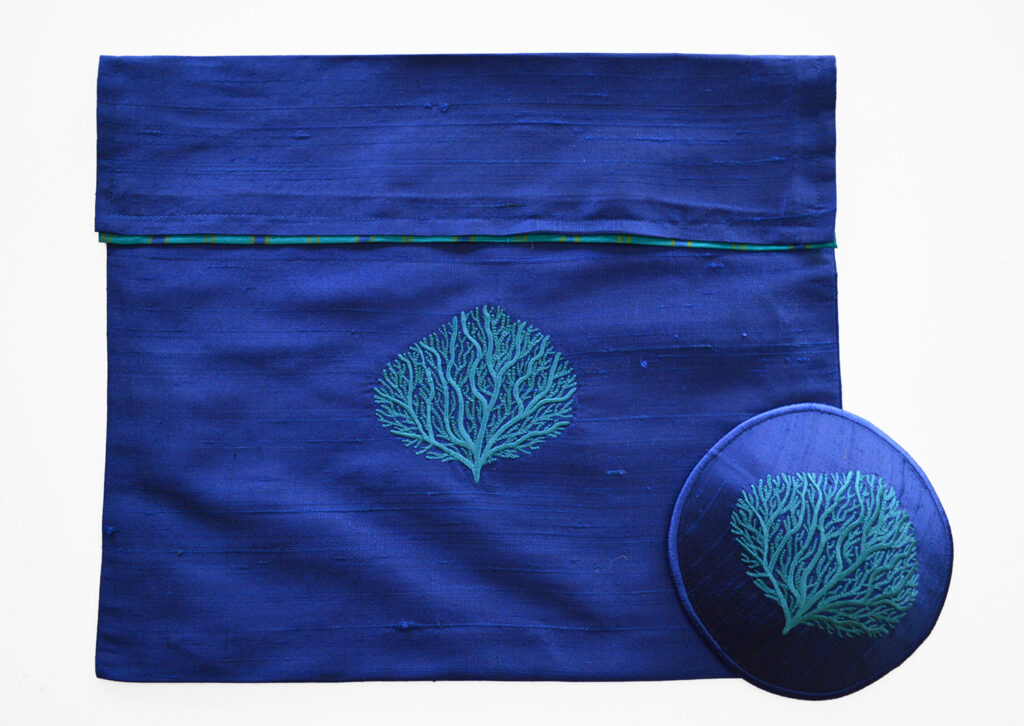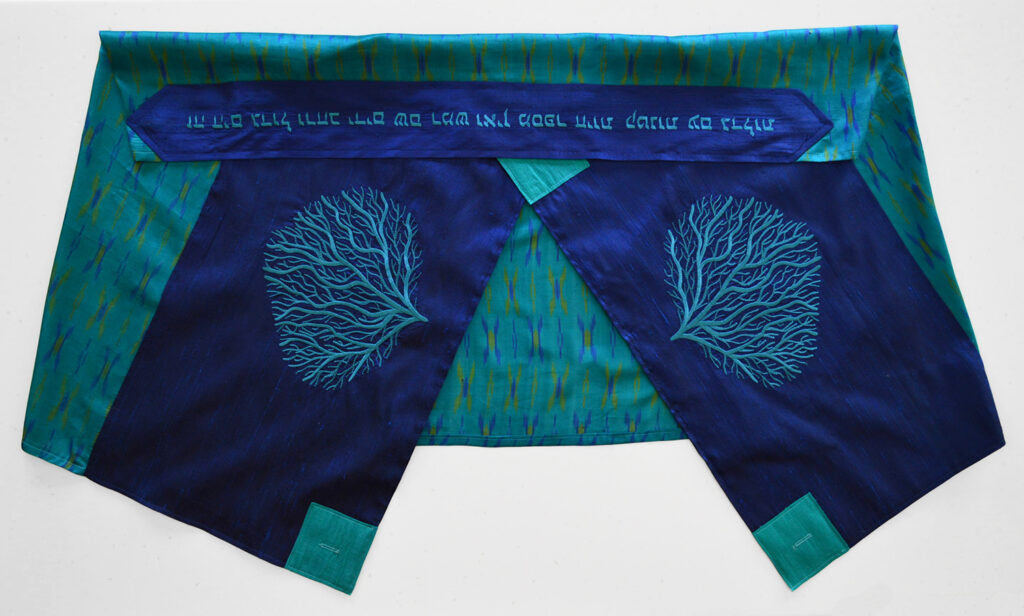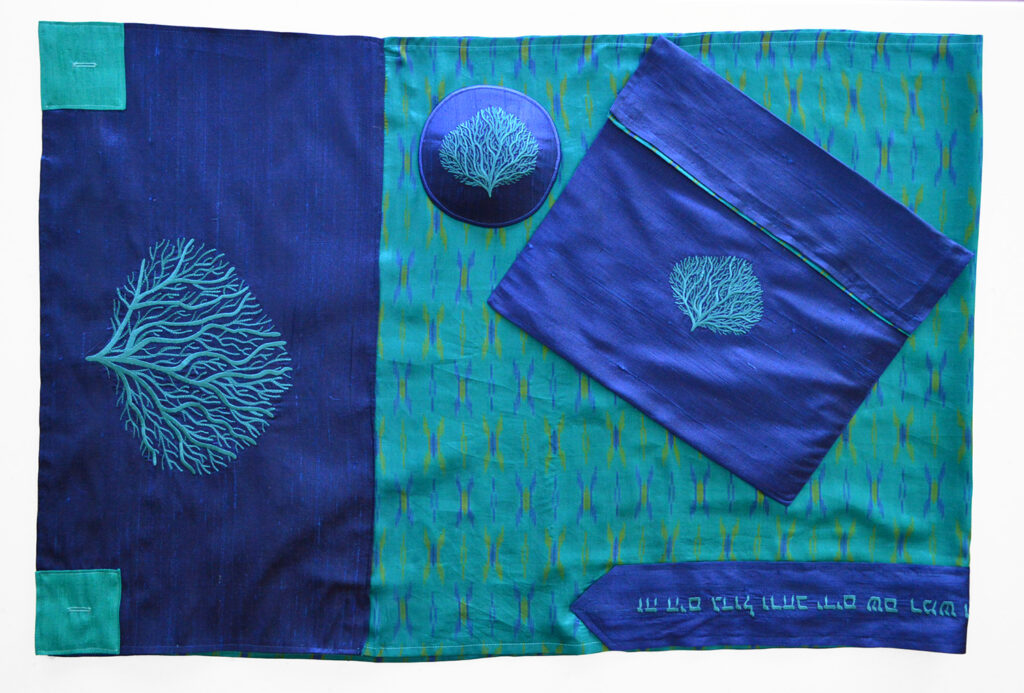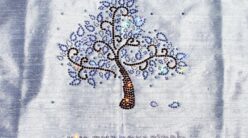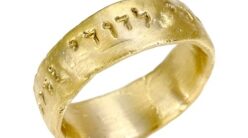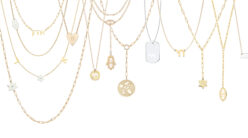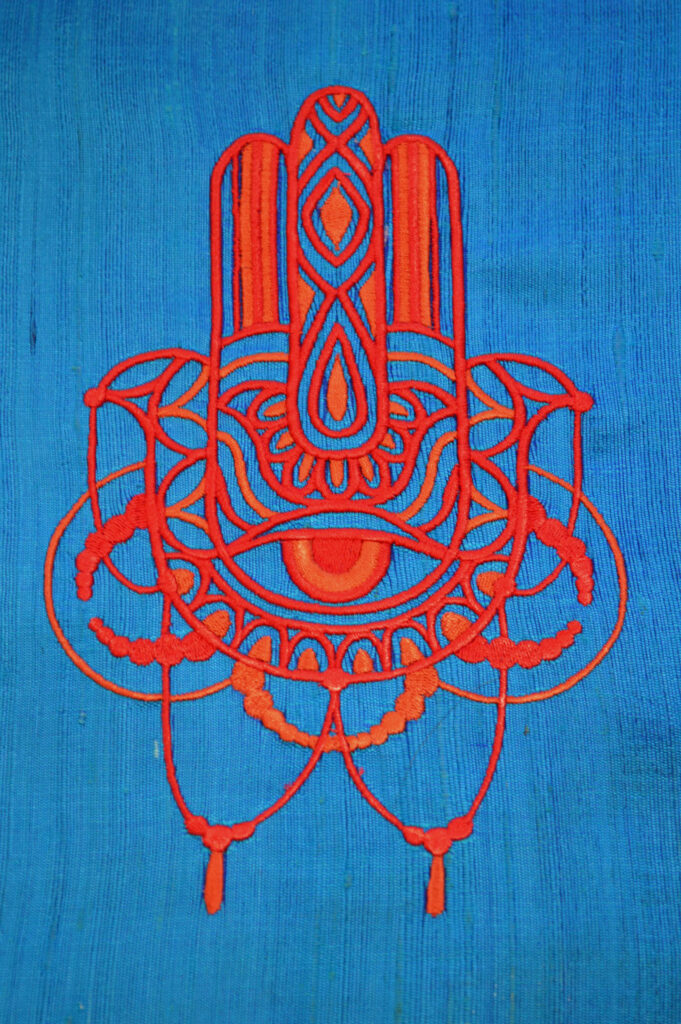
I am a professor of Religious Studies at UNC Charlotte in North Carolina and director of the graduate studies program in that department. I teach Jewish history, courses on antisemitism, the marketing of the Holocaust and a wide assortment of classes on Tanakh (Hebrew Bible). I also teach history and Tanakh for the seminary where I was ordained, ALEPH – Alliance for Jewish Renewal. I hold two MA degrees in history and religious studies respectively as well as a PhD in history. I am the spiritual leader for a small havurah in Concord, North Carolina. I am currently working on the first of two books for Routledge Press on male friendship, homosociality, and women in Hebrew Bible.
Tell us a little bit about yourself and your background.
I work primarily as a teacher of Jewish history and biblical texts. Most of my life has been spent in educational realms, both in earning degrees and becoming a college teacher. Rather late in life, I decided to go back to school to become ordained as a rabbi; I’ve led a small congregation or a havurah for the last 15 years.
My past includes a variety of artistic endeavours. As a child, I was obsessed with drawing. As a teenager, I studied opera and sang with the Chicago Lyric Opera children’s choir. I worked as a community actress and earned my living as a dancer for a few years. For a short time, I directed a children’s theatre troupe and wrote all the plays we performed. I’ve also written an outdoor drama that was performed at a North Carolina State Historic site. And I’ve sewn since I was a young girl.
What inspired you to become an artist?
I think that I’ve engaged in various kinds of artistic activities since childhood – from drawing to singing to dancing to acting. All these activities were inspired by growing up in a family that treasured artistic expression. My dad played drums with Ella Fitzgerald’s pianist when in college, my mother painted, was a talented storyteller, and my sewing teacher.
But more importantly was this: when I started studying to become a rabbi, I was unhappy with the choices for tallitot and especially kippot for women. The latter took the following shapes: a variation on the lacy doilies my mother wore to shul, rather flimsy (though often beautiful) wire and bead creations, or the kind made for men with four quarters, and just done up in “women’s” colors. I didn’t like the lace or the wire myself – I wanted a kippah that felt like the hand of God blessing and resting on my kepe, and that meant I had to be able to feel the kippah covering my head. I had to find a way to make one I wanted to wear. The same went for tallitot, so I began making my own.
Then, I started making kippot for friends and teachers. People kept asking if I sold them. At first I didn’t want to turn art into a business, so I refused for a long time – many years, actually. Finally, a teacher told me that she felt that there were a lot of women out there who “needed” my kippot and she convinced me to sell them. I went to a conference with about 40 kippot and a few tallitot and practically sold out the first time. Later, my son suggested I sell on Etsy.
It has turned out that there are folk in the LGBTQ community who like my work and so I’ve learned from those clients and have changed the style of what I do accordingly.
What is your specialty?
Creating kippot and tallitot – particularly, though not exclusively, for women.
How and where do you work?
In my son’s old bedroom. How do I work? Listening, often, to music and to radio programs that focus on storytelling.
What is the most indispensable item in your studio?
My imagination? If you mean something material, though, my Bernina sewing and embroidery machine.
Where do you take your inspiration? Are you pursuing any themes?
Lately, I’ve been trying to wed my love for Tanakh with the tallitot (and, most recently, a challah cover) by finding verses to embroider on the atarah rather than the standard tallit blessing. When I made a tallit with a particularly powerful floral design, I embroidered a verse from Song of Songs on the tallit atarah (“The flowers appear on the earth; the time of singing has come, and the voice of the turtledove is heard in our land.” [2:12]).
A second source of inspiration: the need to make my art ecologically sound. The base for my kippot is made of recycled materials and I have recently begun creating tallitot out of repurposed saris. I have also stopped using feathers, often make kippot with scraps of fabric and have just located a way to recycle the rest – I am really excited about that.
A third source of inspiration always comes in the form of clients who are looking to create a tallit that will be about who they are. Last year, I made one for a boy who wants to study marine biology someday; his tallit featured a coral embroidery we chose together and a verse that spoke to him of the sea. Some clients, like a Vietnamese-Jewish woman wanted a tallit that could encompass all the strands of her heritage(s).
What projects are you currently working on?
A kippah for a woman who is converting to Judaism and would like to wear something that evokes her Irish heritage.
Several tallitot for which I need to find the right verse for the atarah.
Challah covers that are not just beautiful, but say something about our tradition – I recently made one that featured a verse from Jeremiah about the importance of raising “learners of Torah.” Since we bless our children every Friday night, why not have a challah cover that reflects our hopes for them?
What are your favourite items in your current collection?
I just sold both of them! One was a red and blue sari tallit and the other was wine red. Both were hand-beaded pieces and they were both one of a kind. And besides, my favorite piece is always the one I am about to begin…
© Barbara Thiede
How do you know when a piece is finished?
When it tells me it is. And sometimes it tells me it isn’t right and I need to start all over again. This is really how it works.
Do you do bespoke work?
I do, though there can be a waiting list for that.
What was the first piece you ever sold?
A kippah.
Which project have you enjoyed working on the most so far?
There are three that stand out, really.
The coral reef tallit, kippah and matching tallit bag for the young bar mitzvah boy.
The lotus tallit, kippah and matching tallit bag for my Vietnamese-Jewish client.
An absolutely crazy and wild hamsa tallit made of a purple striated sari, iridescent silk that was turquoise with a purple shimmer and two shades of red embroidery. That one was absolutely crazy colouful.
© Barbara Thiede
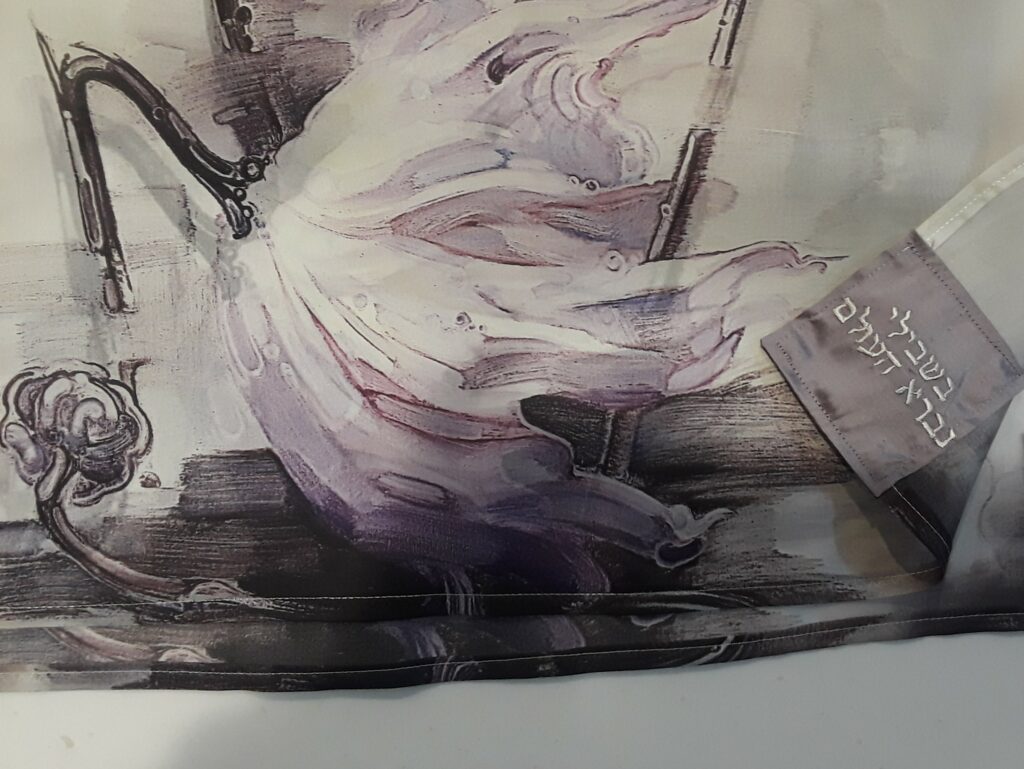
© Barbara Thiede
What do you want to achieve with your work and what are your wishes for the future?
It used to be about giving women tallitot and kippot that weren’t either girly or indifferent to women’s needs, but distinctive and rare. The tallitot I make are only one or two of a kind. That remains very important to me. I want to be able to say to a client that what is being purchased is a unique product.
I have had so many folks from the LGBTQ+ community find me in the last year, though, and I am proud to be able to serve their needs.
Doing everything I can to be ecologically sustainable; the fashion industry produces massive waste, and I feel the need to create without causing harm.
Where can we find your work?
https://www.etsy.com/shop/NotMyBrothersKippah
